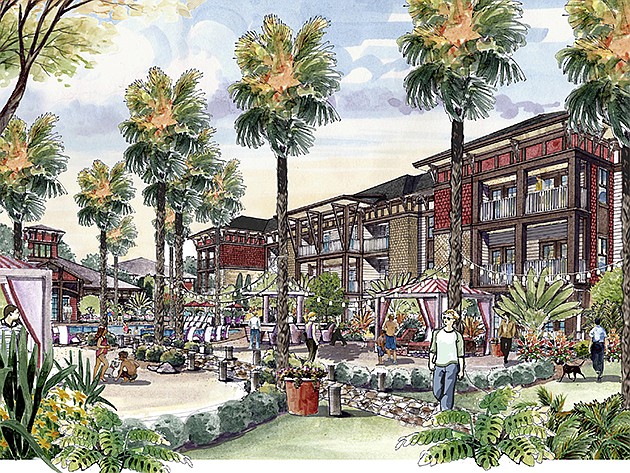- November 25, 2024
-
-
Loading

Loading

Amid continued demand and a relative shortage of supply, the region's commercial real estate industry should flourish for at least the next few years, according to industry leaders who gathered for an annual Urban Land Institute conference Jan. 28 in Tampa.
Hotels, apartment complexes and downtown office towers should do especially well, the experts contend, because new inventory has not kept up with anticipated demand.
“There has never been a better time to be in the hotel industry,” says Kent Schwarz, an executive vice president with commercial brokerage firm Colliers International Tampa Bay, who focuses on the lodging industry.
“The industry has had 72 consecutive months of revpar growth, which is occupancy times average daily rate,” Schwarz adds. “More importantly, the expansion of demand generators isn't chopping up the overall pie like has happened in the past.”
Schwarz notes, too, that the Tampa Bay region in 2015 had among the highest increases nationwide in both average occupancy and revpar, which stands for revenue per available room.
That surging demand is part of the reason Tampa Bay Lightning owner Jeffrey Vinik's Strategic Property Partners is spending $30 million to renovate the amenities and vehicular entryway to its 719-room Marriott Waterside Hotel & Marina.
The real estate company, a joint venture between Vinik and Cascade Investment LLC, also is in discussions with four hotel operating companies regarding a new 500-key hotel that will become part of a $2 billion plan to revitalize Tampa's Channelside District, Vinik told the ULI conference attendees.
The new hotel, Vinik adds, will contain roughly 80,000 square feet of meeting space, a significant amount for an urban hotel but a fraction of the nearly 7 million square feet that is expected to be built in the 42-acre Channelside between now and 2020.
Apartments, too, are expected to continue to be in high demand from baby boomers, born between 1946 and 1964, and millennials aged 21 to 37 alike.
Mitchell Roschelle, the U.S. national real estate advisory practice leader for PricewaterhouseCoopers, believes there is little risk that the multifamily sector will become saturated anytime soon because new complexes and properties have failed to keep pace with housing formations and population influx in states like Florida.
The Tampa and St. Petersburg areas combined, he says citing statistics from research firm Moody's Analytics, are projected to have the sixth-highest population growth of any area in the U.S. through 2020.
“Over the next two years, in particular, we forecast that the demand in this area is going to stay very high,” says Anthony Everett, a partner in apartment developer Pollack Shores Real Estate Group.
Accelerated re-urbanization swelling cities such as Tampa and St. Petersburg also should help proposed skyscrapers like Riverwalk Tower, a planned 52-story, mixed-use high-rise that Feldman Equities and partner Tower Realty Partners intend to complete in 2018 on a tract facing the Hillsborough River.
“There's nationwide a growing demand for new office stock; at the same time we're not adding new supply,” Roschelle says.
Feldman, whose $200 million project is being designed to contain 215,000 square feet of office space, notes Class A office vacancies in both downtown Tampa and St. Petersburg are now in the single digits, and no new office tower has been constructed in Tampa since 1992.
Despite that, only one new office project has gone forward — a build-to-suit building for the Laser Spine Institute.
Other macro-economic trends at work — including the influence of increasingly hand-held technology and the advent of so-called “just-in-time” deliveries by logistics companies like Amazon and even Wal-Mart — also is impacting the region's commercial real estate market.
Schwarz, for instance, notes that one-fifth of all hotel reservations are now made via mobile phones, a significant jump from just two years ago.
And Lee Arnold, Colliers International Tampa Bay's CEO, told the ULI crowd that virtual reality, drones and satellites will play a significant role in real estate sales in the near future.
“The pace of growth of technology is staggering,” Roschelle says. “And that's why big data will be a big story in 2016 and beyond.”
There were, however, notes of dissonance amid the exuberance.
Feldman, for instance, says he is worried that office tower valuations are being impacted more by the Federal Reserve's stance on interest rates than true occupancies and operating income figures.
Capitalization rates have fallen and prices, in turn, have risen in many markets not because occupancies have surged but because interest rates have been tamped down.
“I'm afraid of what might happen if we have interest rate hikes without corresponding higher occupancies and rental rates,” he says.
Everett said the development of so much luxury and high-end apartment developments regionwide could result in a domino effect in which many multifamily projects suffer.
He also called rising residential rents “unsustainable,” and he worries that many families are devoting a historically high 50% or more of their household income to housing.
As a result, Everett says Pollack Shores is studying ways to develop affordable rental units in the area.
Schwarz, too, believes that hotel occupancy growth will “flatten out” as so many new hospitality projects come online in areas that can't support them.
“There are now four new hotels under construction in downtown Sarasota, and there are not really any new demand generators there, so there's a little concern,” he says.
Even so, he expects the region to be able to absorb the new hotels being built. “The hotel sector will be extremely strong through 2019,” he says.
Other presenters felt the same.
“I don't see this (real estate growth) cycle ending like previous ones,” Everett says. “I think we'll continue to see slow and steady growth without excesses.”
- K.L. McQuaid